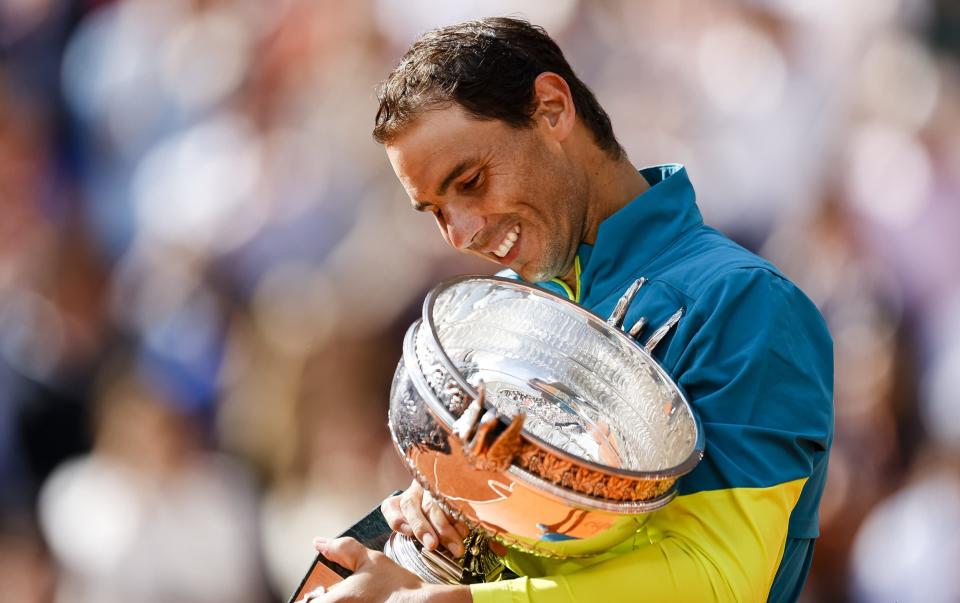
Rafael Nadal’s treatment plan for what could be a career-ending foot injury has divided medical opinion.
Despite winning his 22nd major title at the French Open on Sunday, Nadal’s post-match reaction was centred on how precarious his future remains due to his long-time foot condition.
The latest flare up of pain is due to Mueller-Weiss syndrome, which causes chronic pain in his left foot. Surgery last year proved only a temporary solution and he struggled through daily foot-numbing injections to play at the French Open.
His latest treatment plan is this week to get radiofrequency ablation treatment, which targets and sometimes destroys nerve fibres carrying pain signals to the brain.
Nadal, 36, called it an “extreme” course of action and hinted it may be his only chance of prolonging his career. Initially used to treat back pain, radiofrequency ablation has become more regularly used for joint pain too. But Dr Thomas Haag, a pain management specialist who teaches radiofrequency techniques, said he was surprised Nadal was pursuing the treatment as there is no evidence of its effectiveness in treating Mueller-Weiss syndrome.
“To my knowledge there is no research which established the efficacy of radiofrequency treatment for this condition,” Haag said. “That’s remarkable, when you think that we are dealing with the greatest we know in tennis.
“[The nerves in the affected area of Nadal’s foot] have got sensory as well as motor function. So destroying these nerves using thermal RF would mean that he would risk losing function and I very much doubt that anyone would want to offer this sort of treatment to him. If Nadal knocked at my door I would say that to treat these nerves safely I would do pulsed radiofrequency treatment only – which uses lower temperatures to suppress pain, and has had mixed results, but does not destroy the nerve.”
However Dr Ralph Rogers, a consultant in regenerative orthopaedics and sports medicine and former club doctor at Chelsea Football Club, was more positive about the potential benefits. He has not treated any Mueller-Weiss syndrome patients, but has treated elite athletes with radiofrequency ablation to great effect.
“I don’t think it’s risky doing radiofrequency ablation on this condition, because it’s not aggressive,” he said. “You’re only scrambling the nerve [signals], you’re not destroying the nerve. It is not rocket science, I’ve been doing it for years. It is minimally invasive, non-surgical, it can last, you can repeat it. If it works you may get six or 12 months of pain relief.”
Both specialists did agree that, if successful, Nadal could be back on his feet in time for Wimbledon in three weeks.
Haag added: “Will it cure the condition? No, not really. It could certainly be effective enough for him to last a bit longer on the circuit.”
